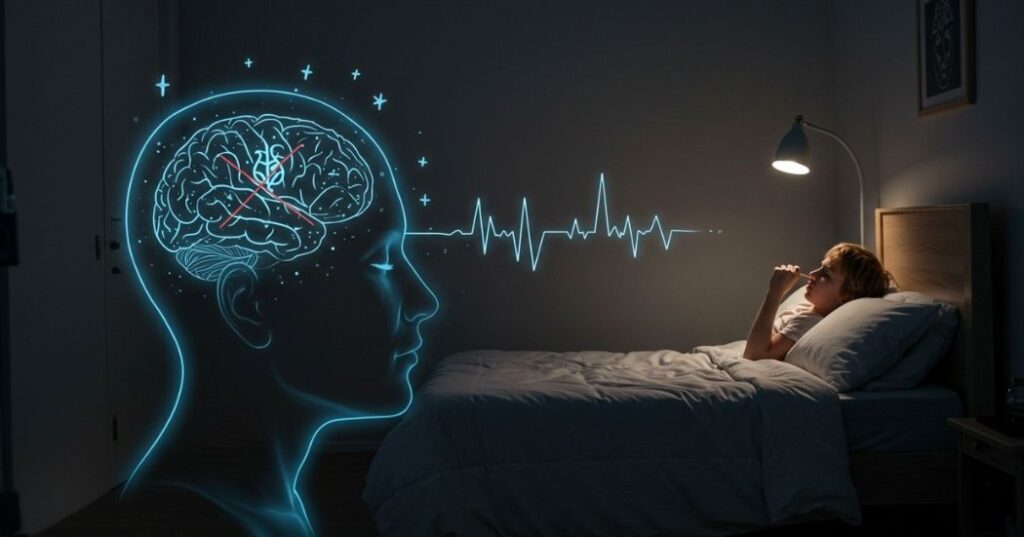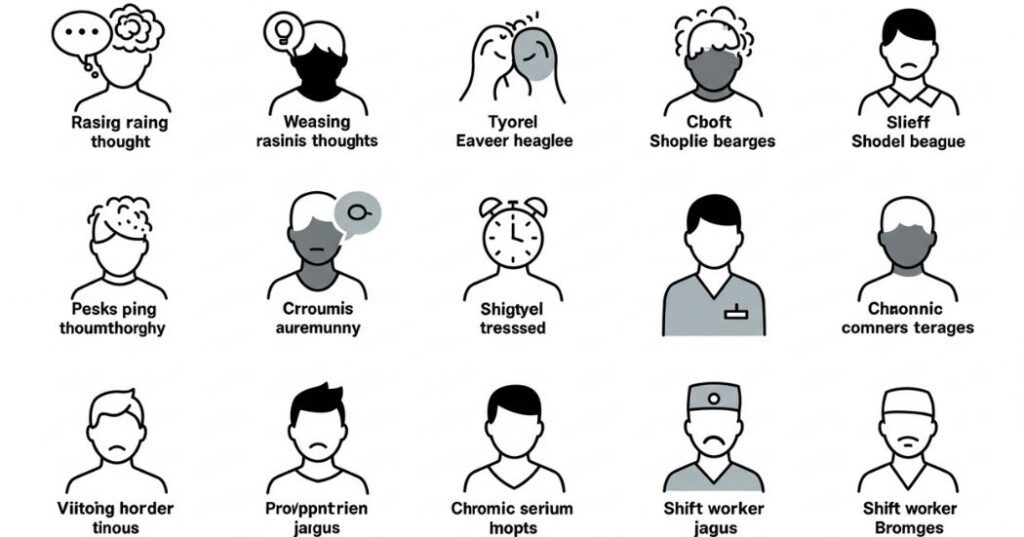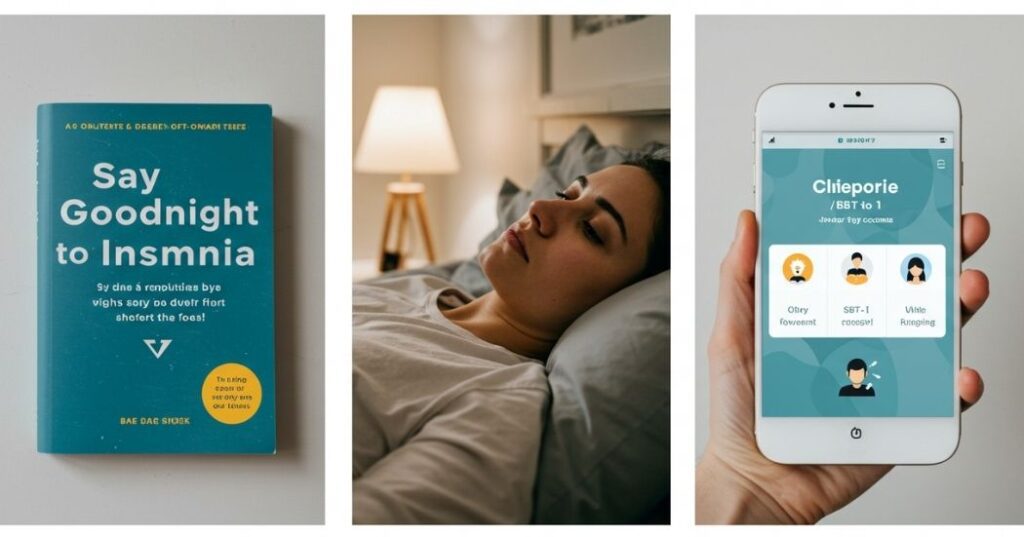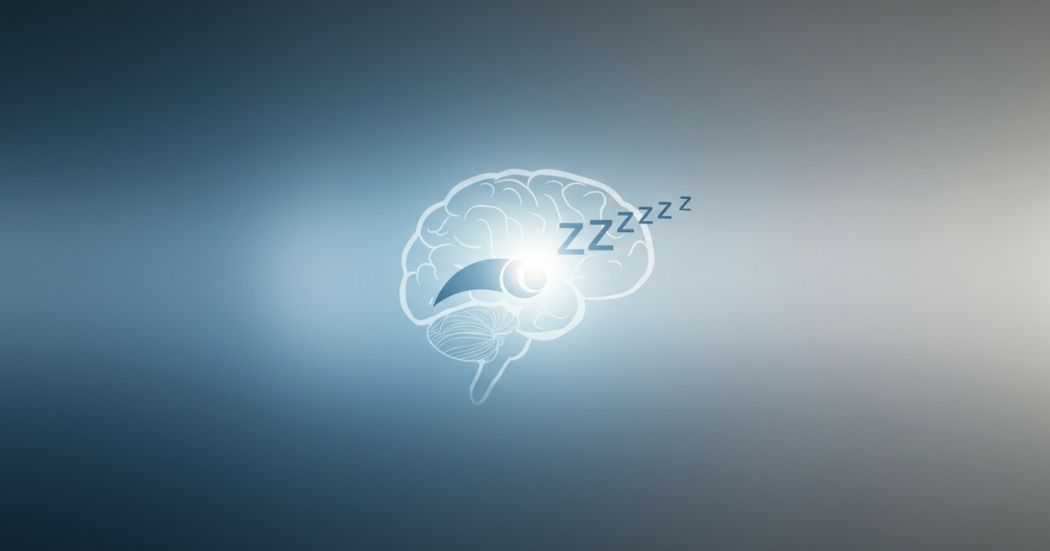Retrain Your Brain for Sleep: CBT-I Techniques for Lasting Insomnia Recovery
If you’ve tried melatonin, white noise apps, warm baths, and every sleep gadget under the sun—and you’re still not sleeping—it’s time to shift your focus. The core issue might not be your sleep environment, but rather what’s happening within your own brain.
CBT-I (Cognitive Behavioral Therapy for Insomnia) is globally recognized as the gold standard in non-drug treatment for chronic insomnia. It’s not just another quick fix; it’s a powerful, evidence-based therapy that works by doing something truly unique: retraining your brain’s fundamental association with sleep. This approach targets the root causes of sleeplessness, helping you build sustainable, healthy sleep patterns.
What Exactly Is CBT

CBT-I is a structured, short-term therapeutic approach delivered by trained professionals (though self-help options are also available). It systematically addresses the various factors that perpetuate insomnia, including:
- Unhelpful Sleep Habits: Identifying and correcting behaviors that inadvertently sabotage your sleep, such as inconsistent bedtimes or excessive napping.
- Anxiety Around Sleep: Directly tackling the pervasive worry and dread that often accompanies chronic insomnia, creating a vicious cycle of sleeplessness.
- Cognitive Distortions: Challenging and replacing irrational or unhelpful thoughts about sleep (e.g., “If I don’t get 8 hours, I’ll ruin my whole day” or “I’ll never sleep again”).
- Conditioned Arousal: Breaking the negative association where your bed or bedroom triggers feelings of stress, frustration, or alertness instead of relaxation. The goal is to make your bed a cue for sleep, not for worry.
According to the American Academy of Sleep Medicine, CBT-I is not only effective but has been shown to be more effective than medication for long-term insomnia management. Its power lies in teaching you sustainable skills you can use for a lifetime.
Who Can Benefit Most from CBT-I?

CBT-I is a versatile and highly recommended intervention for a broad range of individuals struggling with sleep, particularly:
- Adults with Chronic Insomnia: Defined as difficulty falling or staying asleep at least three nights a week for three months or longer.
- Individuals Experiencing Racing Thoughts at Night: If your mind won’t shut off when your head hits the pillow, CBT-I provides tools to quiet mental chatter.
- Those Who’ve Tried Medications or Supplements Without Lasting Results: If pills only offer temporary relief or come with unwanted side effects, CBT-I offers a sustainable alternative.
- Specific Populations: Including shift workers (who often face severe circadian disruption), anxiety-prone individuals, those recovering from trauma, and people with co-occurring health conditions like chronic pain or depression, where insomnia is a common symptom.
Key CBT-I Techniques You Can Implement Today
While full CBT-I is best delivered by a therapist, understanding and practicing these core techniques can offer significant relief and begin the process of retraining your brain.
1. Stimulus Control Therapy: Re-Associating Bed with Sleep
This technique aims to strengthen the mental connection between your bed and sleep, breaking the pattern of using your bed for non-sleep activities that foster alertness.
- Go to Bed Only When Sleepy: Don’t get into bed just because it’s a certain time. Wait until you genuinely feel drowsy.
- Get Out of Bed If Awake > 20 Mins: If you find yourself unable to fall asleep after about 15-20 minutes, or if you wake up during the night and can’t get back to sleep within that timeframe, get out of bed. Go to another room and engage in a quiet, non-stimulating activity (e.g., reading a physical book under dim light, listening to calm music) until you feel sleepy again. Then, return to bed.
- Use the Bed for Sleep (and Sex) ONLY: This is crucial. Avoid activities like scrolling on your phone, watching TV, eating, working, or worrying while in bed. This reconditions your brain to associate your bed solely with sleep.
- Wake Up at the Same Time Every Day, Even on Weekends: This is the cornerstone of regulating your circadian rhythm. A consistent wake-up time helps solidify your body’s internal clock, building strong sleep drive for the following night, regardless of how much sleep you got.
Goal: The ultimate aim of Stimulus Control Therapy is to rewire your brain to consistently associate your bed with immediate sleep onset, not frustration or wakefulness.
2. Sleep Restriction Therapy: Rebuilding Sleep Drive
This technique often sounds counterintuitive, as it initially involves reducing time spent in bed. However, it’s remarkably effective at consolidating sleep and rebuilding your natural “sleep drive.”
- Track Your Actual Sleep Hours: For one week, keep a detailed sleep log. Record the exact time you fall asleep and the exact time you wake up, calculating your actual sleep duration, not just time spent in bed.
- Calculate Your Sleep Window: Based on your average actual sleep time, create a narrow “sleep window.” For example, if you average 6 hours of sleep, you would only allow yourself 6 hours in bed (e.g., from 12 AM to 6 AM). Note: There’s a minimum of 5 hours recommended for safety.
- Gradually Increase Time in Bed: As your sleep efficiency (actual sleep time divided by time in bed) improves (typically reaching 85-90%), you can gradually increase your time in bed by 15-30 minute increments.
Why it Works: By intentionally restricting time in bed, you create a mild state of sleep deprivation. This builds a powerful sleep pressure (or drive), leading to faster sleep onset, fewer awakenings, and ultimately, more consolidated and efficient sleep within your designated window. It teaches your body to make the most of its time in bed.
3. Cognitive Restructuring: Challenging Unhelpful Sleep Thoughts
Chronic insomnia is often perpetuated by maladaptive thoughts and beliefs about sleep. Cognitive restructuring helps you identify, challenge, and replace these unhelpful thought patterns.
- Identify Negative Beliefs: Recognize common “insomnia thoughts” like:
- “I need exactly 8 hours of sleep, or I’ll fall apart tomorrow.”
- “If I don’t sleep now, I’ll fail at work/school/life tomorrow.”
- “Sleep is impossible for me; I’m just a bad sleeper.”
- Challenge These Thoughts: Ask yourself: Is this thought 100% true? What’s the evidence for it? What’s an alternative perspective?
- Replace with More Balanced Thoughts: Reframe your internal dialogue with more realistic and compassionate statements:
- “My body will still rest and perform reasonably well even if I don’t sleep perfectly tonight.”
- “Sleep comes when I stop chasing it and allow my body to naturally relax.”
- “I’m learning new ways to approach sleep, and progress takes time.”
4. Paradoxical Intention: The Counterintuitive Approach
This technique is particularly useful for those who experience performance anxiety around sleep – the harder they try to sleep, the more awake they become.
- The Strategy: Instead of actively trying to fall asleep, paradoxically, you try to stay awake. Gently keep your eyes open and focus on relaxing, perhaps by observing your breathing or surroundings without judgment.
- The Internal Dialogue: Instead of thinking “I must sleep,” reframe it as: “I’ll just rest here quietly. I don’t have to sleep, I’ll just keep my eyes open for a while.”
- Why it Works: This removes the intense pressure and anxiety associated with “trying to sleep.” By releasing the effort, you often allow natural sleep to take over when your body is ready. It’s a powerful way to reduce the physiological and psychological arousal that inhibits sleep.
5. Sleep Hygiene Support: The Foundation (But Not the Whole Solution)
While CBT-I goes far beyond basic sleep hygiene tips, these foundational practices remain crucial supportive elements. Think of them as setting the stage for CBT-I techniques to work their magic.
- Maintain a Cool, Dark, and Quiet Room: Optimize your sleep environment for comfort and minimal disruption.
- Strict Caffeine Cutoff: Avoid caffeine after 2 PM (or at least 6-8 hours before your intended bedtime).
- Morning Light Exposure: Get 10-15 minutes of natural sunlight within an hour of waking to help regulate your circadian rhythm.
- Wind-Down Rituals: Engage in calming activities before bed: journaling (to offload thoughts), NSDR (Non-Sleep Deep Rest) protocols, gentle stretching, or reading a physical book under dim light. Avoid stimulating activities like screens or intense exercise.
Expert Insight: Interview with Dr. Lina Chang (CBT-I Specialist)
To provide deeper insight, we spoke with Dr. Lina Chang, a board-certified sleep psychologist and leading CBT-I specialist.
“CBT-I isn’t a quick fix—it’s a commitment, but the payoff is a truly permanent one. You’re not just temporarily patching up sleep; you’re fundamentally transforming your relationship with sleep itself. You learn to trust your body’s natural ability to sleep and to manage the thoughts and behaviors that interfere with it.”
Dr. Chang strongly recommends seeking guidance from a therapist certified in CBT-I for personalized treatment plans. She also advises clients to supplement their therapy with:
- Detailed Sleep Logs: To track progress, identify patterns, and provide data for therapy adjustments.
- Weekly Behavioral Goals: Setting realistic, achievable steps to implement CBT-I principles.
- Mindfulness Techniques: To cultivate present-moment awareness and calm the pre-sleep anxiety often associated with insomnia.
You can explore her practice and resources at changsleepclinic.com.
Where to Start Your CBT-I Journey

Accessing CBT-I is becoming increasingly convenient. Here are some excellent starting points:
- Digital CBT-I Programs: These platforms offer structured, interactive CBT-I courses that can be completed at your own pace.
- Sleepio: A well-regarded online program that guides users through CBT-I principles.
- Somryst (FDA-approved): A prescription digital therapeutic clinically proven to treat chronic insomnia.
- Recommended Books for Self-Guided CBT-I: These resources provide comprehensive instructions for implementing CBT-I techniques independently.
- Say Goodnight to Insomnia by Dr. Gregg Jacobs: A classic and highly effective self-help guide.
- Quiet Your Mind and Get to Sleep by Colleen Carney, PhD: Offers practical strategies for managing racing thoughts and sleep anxiety.
- Professional Coaching & Resources: For personalized support, consider:
- Our own CBT-I Sleep Recovery Workbook: A structured guide to help you apply CBT-I principles at home.
- Connecting with a certified CBT-I provider: Many sleep clinics and private practices offer CBT-I therapy. Search for certified sleep psychologists in your area.
Final Thoughts: Reclaim Your Nights, Reclaim Your Life
You don’t have to endlessly fight sleep. With CBT-I techniques, you can relearn it—through a calm, proven method that builds lasting resilience. This isn’t just about managing insomnia; it’s about building profound trust in your body’s natural sleep capabilities, cultivating confidence in your sleep routine, and developing mental resilience against sleep-related worries.
Ready to break free from the exhausting cycle of sleepless nights and rediscover the joy of restorative sleep? Explore our CBT-I based sleep recovery workbook or connect with certified sleep therapists to begin your journey toward lasting insomnia recovery. What’s one small step you’ll take tonight to retrain your brain for better sleep?
🔗 Want to Go Deeper into Sleep Rewiring?
If you’re ready to move beyond tips and commit to real insomnia recovery, these expert-backed guides will help you:
- → How to Build an Insomnia Recovery That Lasts
- → Sleep Anxiety Holding You Back? Here’s How to Retrain Your Brain
- → The Surprising Power of a Consistent Bedtime Routine
✨ Start here, and let CBT-I be your path to calm, consistent, restorative sleep.
📚 References
- Trauer, J. M., et al. (2015). Cognitive Behavioral Therapy for Chronic Insomnia: A Systematic Review and Meta-analysis. Annals of Internal Medicine, 163(3), 191–204.
https://doi.org/10.7326/M14-2841 - Morin, C. M., et al. (2006). Psychological and behavioral treatment of insomnia: update of the recent evidence (1998–2004). Sleep, 29(11), 1398–1414.
https://pubmed.ncbi.nlm.nih.gov/17162986/

